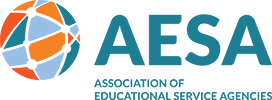Partnerships Create Culturally Responsive PD
Cross-sector partnerships result in technology infused, culturally responsive, professional development for teachers in Alaska
By John Fitzgerald
SERRC (Southeast Regional Resource Center) in Alaska has embarked on a three-year teacher education project that could have far-reaching effects not only for minority students across the state but also for students throughout the country.

Passages Teacher Leaders reflect on the “Culture of Us” activity to start exploring their own cultures
SERRC, Alaska’s education resource center, has just finished the first year of a program funded by a three-year, $3.6 million grant from the U.S. Department of Education to improve teaching quality for Native Alaskan students. The need is great, not only for the Native Alaskan students who make up about one-third of Alaska’s student population, but also for young teachers who find themselves in isolated districts teaching to students of a culture they don’t understand.
The Alaska Native Program Grant focuses on students and teachers in districts that strain the definition of remote. Gerry Briscoe, the director of professional learning at SERRC, said the eight target districts can be reached only by aircraft or ferry. The districts have a total of 5,100 students and 410 teachers.

Multicultural students share their observations of a science experiment in a multi-age setting in Kodiak Island Borough School District.
“The program works to bring a culturally specific mindset to teaching,” Briscoe said, via technology, digital cultural resources, and video-based cultural learning through video coaching.
To do this, SERRC has teamed with the eight districts, local Native Alaska leaders, the Sealaska Heritage Institute, Modern Teacher, and the Teaching Channel. The Native Alaskan organizations and Sealaska provide the culturally specific information teachers need, while Modern Teacher helps build the strategic planning platform and Teaching Channel provides the hardware and software for video teaching and professional learning.
Sealaska Heritage Institute (SHI) is a non-profit organization that perpetuates and enhances Tlingit, Haida, and Tsimshian culture and language. They are providing the information teachers need to better educate students in those cultures.
“SHI’s research has shown that Native students do better academically when Native culture and languages are integrated into classrooms,” SHI President Rosita Worl said, so the institute shares and develops materials, professional development videos and other resources that are culturally relevant.
In fact, Sealaska and SERRC teamed up to create apps for desktop and mobile devices that help students learn the Tlingit language. While Sealaska is motivated to keep the language and culture alive, SERRC is interested in keeping school relevant for Tlingit students.
Modern Teacher provides the platform software to monitor the goals and objectives of the program in addition to professional learning software that connects the teachers with program organizers.
The Teaching Channel brings 21st century video technology to bear on professional development. To help them incorporate Tlingit, Haida, and Tsimshian culture and language into the classroom, teachers are recorded using an iPhone or iPod on a tripod that sits in the middle of the classroom. The teacher wears a lanyard with a GPS chip and a voice recorder. The tripod swivels the camera to follow the teacher while recording the lesson. The teacher then uploads the lesson to SERRC where mentors can provide feedback to improve the lesson’s cultural relevance.

Example of an Alaska Culture Standard for planning instructional strategies for evaluation and feedback.
“While this program focuses on Native Alaska students, it impacts every student,” SERRC Executive Director Sheryl Weinberg said. When some of the students do better, everyone does better. “All boats go higher,” she said.
Measurements include student engagement as teachers become more aware of their culture, so teacher and student surveys are important to the program, according to Weinberg. Test scores and other traditional measurements are also included, although the program was set back slightly when last spring’s statewide standardized tests were thrown out due to a technical glitch with a new vendor.
Briscoe and Weinberg have their sights set farther than just this program and what it can do for students in Alaska. They hope this program can be used to increase teacher retention.
“We have an extremely high teacher turnover rate,” Briscoe said.
One-third of teachers leave after the first year and 64 percent after four years. Nearly 90 percent of teachers are from outside Alaska and many have a difficult time not only with Native Alaskan culture but with the geographic isolation as well.
“When you have values and experiences that are so different from your students, it’s difficult to stay,” Briscoe said. “We hope that by helping teachers understand the cultural differences and how to reflect those differences in their teaching will make teachers more successful and fulfilled.”
The issue of relevance isn’t limited to Native Alaskans. The state has a large number of minority and mixed race students, and teachers need resources to reach those students as well.
SERRC also hopes this program’s technological backbone will be scalable to meet professional development requirements. With remote locations and small population, video conferencing is the most effective means of professional development on a statewide level.
SERRC’s work with Sealaska plays an important part in creating the basics for professional education, Weinberg said. Cultural relevance is one of the goals for professional development and Sealaska’s involvement helps make sure that the goal is as thorough as possible. But even bigger than that, there is the greater goal of all education.
“This is not just about Native Alaskans, not just about ethnicity,” Briscoe said. “What we are really trying to provide is equity, social justice and inclusion for all students.”
